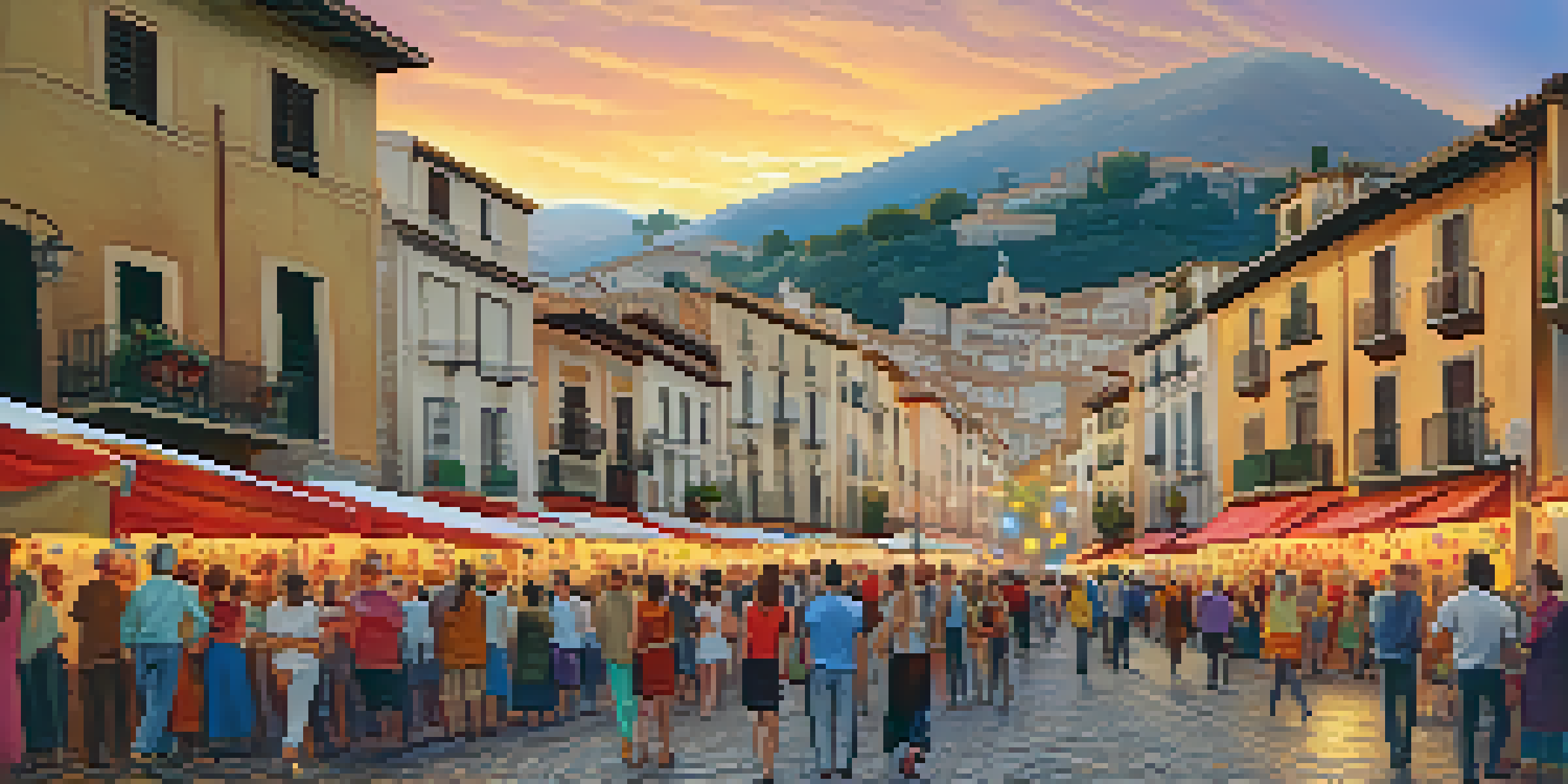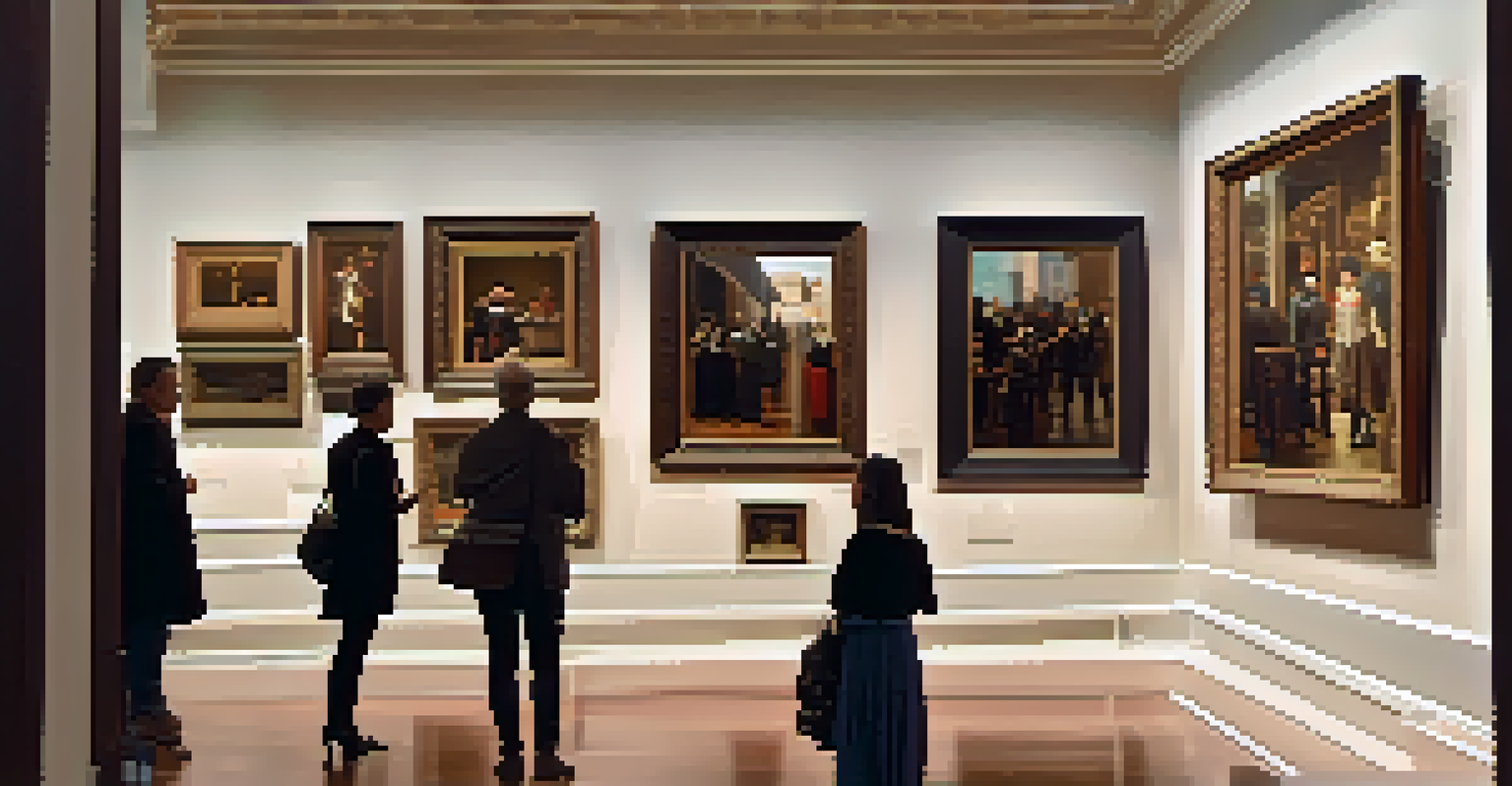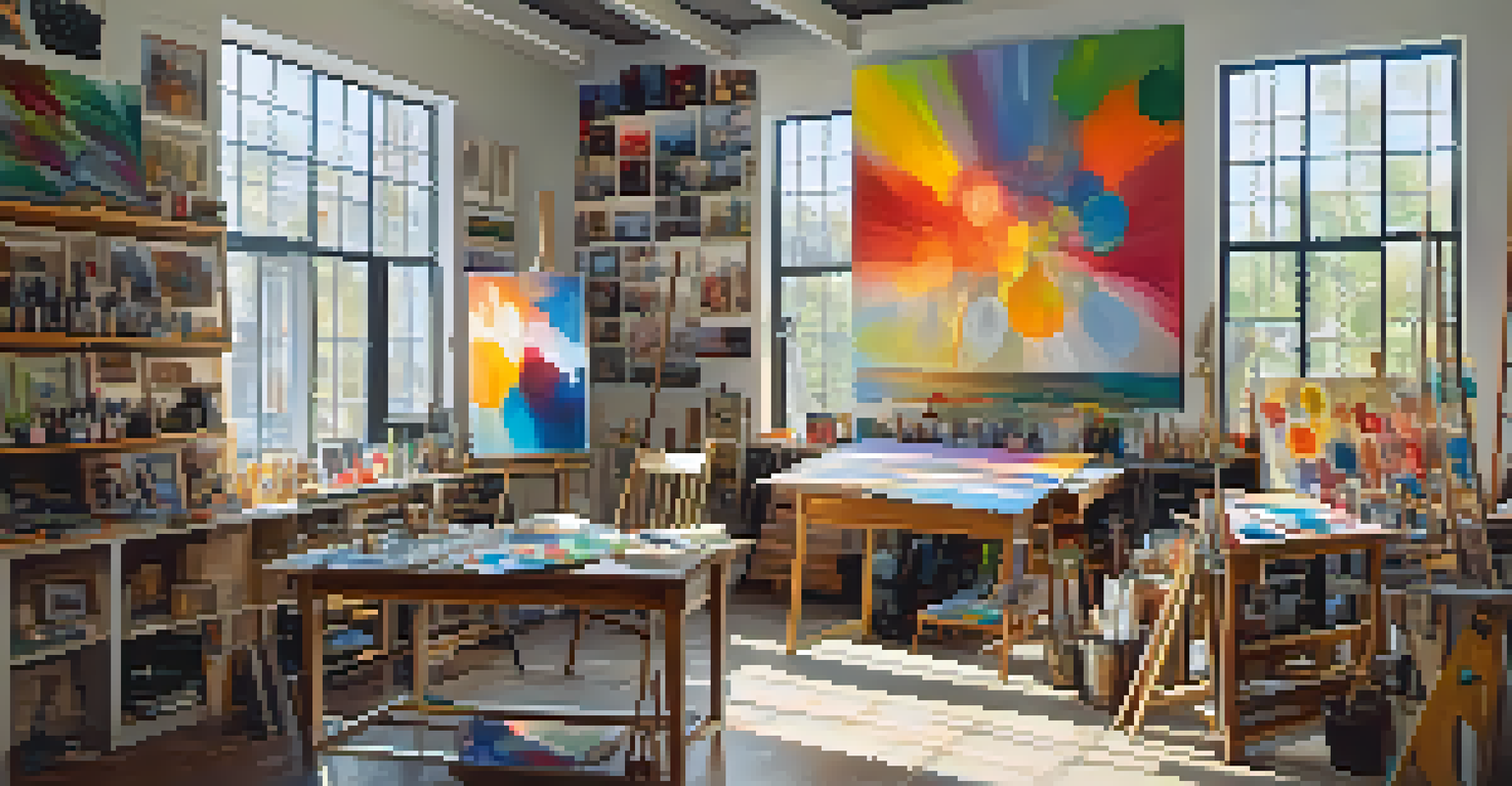Exploring the Rich Heritage of Spain's Local Art Institutions

The Heartbeat of Spain: Local Art Institutions
Spain is a tapestry of culture, and its local art institutions form the vibrant threads that weave this narrative. From quaint galleries in small towns to bustling museums in major cities, these institutions often reflect the unique heritage of their locales. They play a crucial role in not only preserving art but also in nurturing emerging talent and promoting community engagement.
Art is not freedom from discipline, but disciplined freedom.
Take the Museo Carmen Thyssen in Málaga, for example. This museum is dedicated to 19th-century Spanish paintings and offers visitors a glimpse into the artistic movements that shaped the country. By showcasing local artists and their works, it fosters a sense of pride and connection to the region’s artistic legacy.
These art institutions are more than just buildings; they are community hubs where creativity thrives. They host workshops, exhibitions, and events that invite locals and tourists alike to explore and appreciate the rich cultural narratives that define Spain.
A Journey Through Spain's Regional Art Styles
Each region of Spain boasts its own distinctive art styles, reflecting the diverse cultural influences that have shaped its history. For instance, the vibrant colors and bold forms of Andalusian art contrast sharply with the intricate details of Catalan modernism. Local art institutions often celebrate these unique styles, giving visitors an immersive experience into regional heritage.

The Fundación Joan Miró in Barcelona is a prime example of how local institutions honor specific artistic movements. Dedicated to the works of the surrealist artist Joan Miró, this foundation not only showcases his masterpieces but also promotes contemporary artists inspired by his creativity. This blend of past and present makes such institutions vital for understanding regional art.
Local Art Institutions Foster Creativity
Spain's local art institutions play a vital role in nurturing emerging talent and cultivating community engagement through exhibitions and workshops.
By exploring these regional differences, art lovers can appreciate the rich tapestry of influences that contribute to Spain’s artistic landscape. Local art institutions serve as the perfect starting point for this journey, guiding visitors through the story of Spain’s diverse artistic heritage.
Celebrating Local Artists and Their Innovations
Local art institutions in Spain are key players in celebrating and promoting emerging artists. They often provide platforms for local talent to exhibit their works, helping to cultivate the next generation of creative minds. This support not only nurtures individual artists but also enriches the community’s cultural fabric.
Every artist was first an amateur.
For example, the Centro de Arte Contemporáneo in Málaga regularly features exhibitions by up-and-coming artists. These events not only showcase innovative works but also encourage dialogue and collaboration among artists and the community. Such initiatives are crucial for fostering a thriving arts scene that is both inclusive and dynamic.
In this way, local art institutions act as incubators for creativity, providing young artists with the resources and exposure they need to flourish. By investing in local talent, these institutions ensure that the spirit of innovation continues to thrive within Spain’s artistic community.
Connecting Art with Local Communities
Art is not just about what hangs on the walls; it's also about how it connects with the community. Local art institutions in Spain often engage with residents through educational programs, workshops, and outreach initiatives. These efforts aim to make art accessible to everyone, regardless of their background or experience.
For instance, many museums offer guided tours and interactive activities that encourage participation from all ages. This approach helps demystify art and invites community members to see themselves as part of the artistic dialogue. By fostering this connection, local institutions contribute to a more inclusive cultural landscape.
Regional Diversity in Art Styles
Each region of Spain showcases unique art styles, with local institutions celebrating these differences and providing immersive experiences for visitors.
Moreover, these community-focused initiatives can spark creativity and inspiration among residents. When people engage with art on a personal level, they are more likely to appreciate and support local artists and institutions, creating a vibrant ecosystem of creativity and collaboration.
The Role of Festivals in Artistic Heritage
Spain is renowned for its lively festivals, many of which celebrate local art and culture. These events often showcase traditional crafts, performances, and exhibitions, serving as a platform for local artists to gain visibility. Festivals like La Mercè in Barcelona or the Feria de Abril in Seville are perfect examples of how art and culture come alive in communal celebrations.
Local art institutions frequently partner with these festivals to enhance their programs and reach broader audiences. By integrating art into these events, they help maintain cultural traditions while also promoting contemporary artistic expressions. It’s a beautiful blend of the old and the new, enriching the community’s artistic landscape.
Participating in such festivals not only strengthens community ties but also fosters a sense of pride in local heritage. By celebrating art in this way, Spain showcases its rich cultural identity to both locals and tourists, ensuring that its artistic legacy continues to thrive.
Exploring Historical Art Institutions
Some of Spain's most prestigious art institutions have deep historical roots, providing invaluable insights into the country’s artistic journey. Institutions like the Museo del Prado in Madrid are not just museums; they are custodians of history, housing masterpieces that span centuries. They offer a glimpse into the evolution of art styles and movements that have shaped Spain.
Visiting historical institutions can feel like stepping back in time, where the walls echo with stories of past artists and their creative processes. The rich collections often include works by renowned artists such as Velázquez, Goya, and El Greco, who have left an indelible mark on the art world. This connection to the past enriches our understanding of contemporary art practices.
Festivals Celebrate Artistic Heritage
Lively festivals across Spain serve as platforms for local artists, blending traditional and contemporary art while strengthening community ties.
By exploring these historical art institutions, visitors gain a deeper appreciation for the cultural heritage that underpins modern Spanish art. It’s a fascinating journey that illustrates how history influences current artistic expressions, making a visit to these institutions a must for art enthusiasts.
The Future of Local Art Institutions in Spain
As the art world continues to evolve, local art institutions in Spain are adapting to meet the needs of contemporary audiences. With the rise of digital technology and changing cultural landscapes, these institutions are exploring innovative ways to engage with visitors. Virtual exhibitions, online workshops, and social media outreach are just a few examples of how they are embracing the future.
Moreover, there is a growing emphasis on sustainability and inclusivity within the arts. Many local institutions are rethinking their programs to ensure they reflect diverse voices and perspectives. By prioritizing these values, they can create a more equitable artistic environment that resonates with a broader audience.

Looking ahead, local art institutions will play a pivotal role in shaping Spain's artistic future. By fostering creativity, supporting local artists, and embracing new technologies, they will continue to be vital contributors to the country's rich cultural heritage.